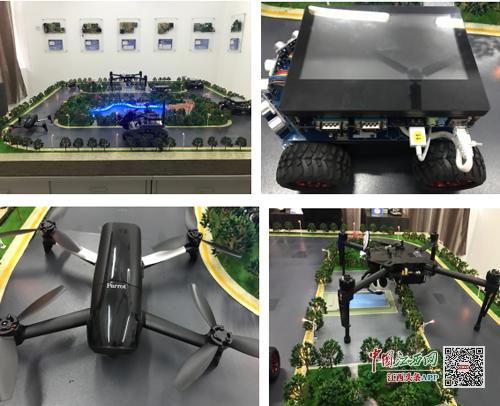您所在的位置:首页 - 科普 - 正文科普
无人机仿真编程平台哪个好
![]() 燕熹
2024-04-17
【科普】
692人已围观
燕熹
2024-04-17
【科普】
692人已围观
摘要**Title:ExploringUnmannedAerialVehicle(UAV)SimulationProgrammingPlatforms**UnmannedAerialVehicles(UA
**Title: Exploring Unmanned Aerial Vehicle (UAV) Simulation Programming Platforms**
Unmanned Aerial Vehicles (UAVs) have revolutionized numerous industries, from agriculture to defense, by offering efficient, cost-effective solutions. One crucial aspect of UAV development is simulation programming platforms, which enable developers to test and refine UAV algorithms and control systems in a virtual environment before deployment. In this article, we'll delve into various UAV simulation programming platforms, their features, and provide guidance on choosing the right platform for your needs.
### Understanding UAV Simulation Programming Platforms
UAV simulation programming platforms serve as virtual environments where developers can simulate various scenarios and test UAV algorithms and control systems. These platforms offer several key features:
1. **Realistic Environments**: High-fidelity simulations replicate real-world environments, including landscapes, weather conditions, and obstacles, providing a realistic testing ground.
2. **Sensor Simulation**: Advanced platforms simulate sensors such as cameras, LiDAR, and GPS, allowing developers to test sensor fusion algorithms and perception systems.
3. **Physics Engine**: Accurate physics engines model UAV dynamics, including aerodynamics, propulsion, and wind effects, ensuring realistic flight behavior.
4. **Scalability**: Platforms should support scalability, allowing developers to simulate single UAVs or large-scale swarms for complex scenarios.
5. **Customization and Extensibility**: The ability to customize environments, UAV models, and integrate custom algorithms is crucial for addressing specific research or application requirements.
### Popular UAV Simulation Programming Platforms
1. **Gazebo**: Gazebo is an open-source 3D robotics simulator widely used for UAV development. It offers a rich set of features, including realistic physics, sensor simulation, and a large library of pre-built models. Gazebo's integration with ROS (Robot Operating System) makes it a popular choice among robotics researchers and developers.
2. **AirSim**: Developed by Microsoft, AirSim is an open-source UAV simulation platform built on the Unreal Engine. It provides realistic environments, sensor simulation, and support for various platforms, including DJI drones and custom-built UAVs. AirSim's high-fidelity graphics and physics engine make it suitable for both research and commercial applications.
3. **PX4 SITL (Software-in-the-Loop)**: PX4 is an open-source flight control software for UAVs, and its SITL feature allows developers to simulate PX4 firmware and autopilot behavior within the software environment. While not as feature-rich as standalone simulators, PX4 SITL is valuable for testing and debugging UAV control algorithms directly within the PX4 ecosystem.
4. **Dronecode Simulation**: Dronecode, an open-source UAV software platform, offers simulation tools for testing PX4-based UAVs. It includes Gazebo-based simulations and tools like QGroundControl for mission planning and ***ysis. Dronecode's integration with PX4 makes it a comprehensive solution for UAV development.
### Selecting the Right Platform
When choosing a UAV simulation programming platform, consider the following factors:
1. **Requirements**: Determine your specific simulation requirements, such as sensor simulation, environment complexity, and scalability.
2. **Integration**: If you're using existing UAV software frameworks like ROS or PX4, choose a platform with seamless integration to streamline development.
3. **Community Support**: Platforms with active user communities offer valuable resources, tutorials, and support forums for troubleshooting and knowledge sharing.
4. **Scalability and Performance**: Ensure the platform can handle the scale and complexity of your simulations without compromising performance.
5. **Cost and Licensing**: Consider the cost implications, especially for commercial use, and ensure compliance with licensing terms for open-source platforms.
### Conclusion
UAV simulation programming platforms play a crucial role in the development and testing of UAV systems, offering a safe and cost-effective way to refine algorithms and control systems before real-world deployment. By understanding the features and considerations outlined in this article, you can choose the right platform that meets your specific needs, whether you're conducting research, developing commercial applications, or experimenting with UAV technologies.

https://ksdln.com/
Tags: 无人机仿真编程平台下载 无人机仿真dji 无人机仿真模拟理论及实务操作
版权声明: 免责声明:本网站部分内容由用户自行上传,若侵犯了您的权益,请联系我们处理,谢谢!联系QQ:2760375052
上一篇: 国外研究跨境电商的学者
下一篇: 电商上班时间
最近发表
- 探索日本核污染水排放,现状、影响与应对策略
- 全职妈妈离婚获2万元经济补偿,揭秘背后的真相与启示
- 王琳惊艳亮相,54岁穿短裙婚纱走秀的优雅与活力
- 继续深耕中国,共创共享机遇
- 千位歌迷在刀郎演唱会现场外,音乐盛宴如梦如幻
- 渔船遇海盗袭击,3名中国人失踪,紧急救援与深入理解
- 小米试驾体验遇尴尬,雷军秒道歉引热议
- 香港歌手李国祥去世
- 音乐人因刀郎跨越西洋乐与中国音乐的奇妙转变——深度解读与启示
- 清华毕业生失踪背后的罗生门,揭开真相与寻找答案
- 韩国救山火消防员盒饭,一份充满人间温情的瞬间
- 黄金价格的终极目标,探寻价值与投资方向
- 小区惊魂,儿童车祸事故的警示与启示
- 湖南38个机关事业单位围墙全拆,开启新篇章
- 车主掉头遇红灯,后车滴滴巧应对
- 探索云南曲靖市会泽县的地震事件
- 新郎没拉裤子拉链,新娘手动闭链的浪漫婚礼
- 10岁女孩高烧去世,被诊断为7种疾病
- 拥抱与冒险,两个小孩的温馨瞬间与泥坑的奇妙旅程
- 女厅官落马后,下属被查风波掀起波澜
- 勇敢逆行,诠释人间大爱——关于溺亡外卖员及其家庭的故事
- 大摩小摩去年四季度疯狂买A股
- 从人去楼空歌词中读懂离别的深情与生命的哲思
- 甲亢患者学功夫之路,挑战与成长
- 九牛一毛歇后语——生活中的小智慧大道理
- 多名大陆配偶被限期离台 台各界发声
- 和巧虎一起玩躲猫猫,让孩子在游戏中学习与成长!
- 王者荣耀游戏体验优化与应对关键问题的应对策略
- 探索趣味与成长的数字乐园
- 地震的力量,缅甸与汶川地震的对比
- 畅享军事模拟游戏的无限乐趣
- 缅甸地震,灾难中的救援与应对
- 董宇辉报平安,温馨时刻
- 机战王洛洛历险记全集——一场童年的奇幻冒险之旅
- 揭开美军飞行员之怒,深入了解行为后果与安全责任
- 揭开全国重名查询系统的神秘面纱,如何轻松找到与你同名的人
- 缅甸地震中的救援行动与启示
- 揭秘你的另一个星座,探索隐藏的性格密码
- 东旭集团证券违法拟被罚17亿元
- 深入解析暗黑破坏神攻略,助你成为圣休亚瑞的传奇英雄
- 专家解读地球是否进入活跃期文章标题
- 畅玩经典——实况足球10中文版的全面解析与攻略
- 牛肉市场中的中方与美国厂商,续约与挑战
- 畅玩捕鱼达人单机版,轻松体验水下冒险的乐趣
- 王钰栋应对脚踝受伤,回应与处理
- 探索自然的灯塔——野外女教师的角色与魅力
- 华阳集团,2024年净利润增长引领行业新篇章
- 探索南美大陆的地理瑰宝
- 男子做马拉松陪跑一场收入6000元
- 69岁阿姨的退休生活,自驾游的传奇之旅文章标题及内容


